Communication Channels for the City: Old Formulas Revisited and New Paths
Edited on
09 October 2017Integrated city branding is not about logos & campaigns, but building up unifying and updated narratives of the contemporary city. That´s in essence the brand concept when applied to cities and places...
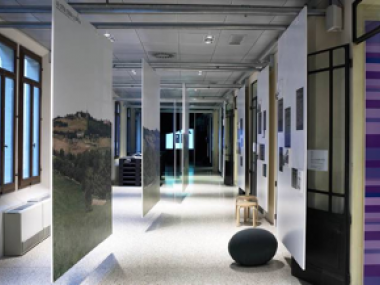
In Tim Manson´s words, from Marketing Birmingham, “this is not about big launches and big campaigns, this is simply about changing behaviours and creating unity in the way stakeholders talk about the city when promoting the benefits to residents, visitors and businesses alike”. London´s brand platform London & Partners defines its mission just as “to tell London's story brilliantly”. So, narrative is the first and most fundamental, albeit there is no city branding without effective communication channels and actions targeting specific target groups. But, which mix of communication actions in today´s city branding?
The impact of the digital shift
First idea is that addressing the question of communication channels for the city is not as simple as evolving to more digital-based initiatives. The challenge for cities is to make a choice on their particular new ecology of different tools, including old but still functional formulas duly revisited, together with new paths (see figure). Therefore, such new ecology of tools demands capability to tell the city story in a variety of environments. A kind of transmedia storytelling, well adapted to a range of different communication channels and platforms, and this is a technological and creative challenge indeed.
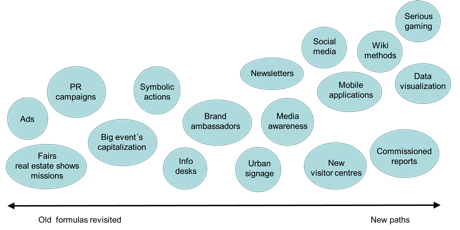
A new ecology of city´s communication tools. Source: M. Rivas
Second idea is about the profound impact of the digital shift, as in most aspects of contemporary life. It´s clear websites and PDF format have killed the printed brochure and the experience of cities and places increasingly starts in front of the computer or tablet. But, what else? At this point, a right understanding of the digital driver and its benefits matters a lot, in order to make the most of it in city branding & marketing:
• Today, there is no way to differentiate between city´s positioning strategies off-line and on-line, as both are intertwined. Urban identities must be equally constructed at the digital level.
• New digital media facilitate enormously reaching very specific target groups, far located, and interacting with them in a two-way communication.
• Thanks to the digital shift new tools have emerged adding new dimension and enriching the experience of place in real time by visitors and locals.
• It provides a framework to channel the increasing demand for a more inclusive and authentic place branding, from crowdsourced brand content to wiki-methods for keeping current the city´storytelling.
• The digital media enables much better cost-efficiency ratio and refined tools for accountability, e.g. social media activity (how effective we are interacting with both our brand community at local level and city´s target groups world-wide) can be exhaustively monitored through a wide range of “social media listening tools”.
It is not easy promoting this. It demands clear strategy, time and resources. VisitOslo is a good case placing digital media at the core. The agency is now radically improving its competence in digital communication and is aware of any innovation in the field, just in order to increase “Oslo´s digital footprint”. Its mission has been re-formulated as “influencing the visitor’s experience in Oslo before, during and after visiting”, and a number of lessons can be extracted from them:
• Digital media is not another communication channel to be considered. Both overarching strategy and the organization itself have to be re-formulated around the digital driver, which has a direct impact in every communication channel, from the visitor centre to PR and campaigning.
• The bet for mobile social media rises the question of wi-fi/roaming costs, particularly for international guests.
• In this context, website remains at the core of the system. It is still the information hub. The homepage is far to be dead as someone may think.
• Social media and digital marketing is not for free. Budget is an unavoidable issue when facing seriously the digital shift in city branding.
Revisiting old formulas…
It is a fact the close association of city branding to big, expensive PR campaigns, only affordable to a few, has damaged the reputation of the field, particularly in a context of financial and economic crisis. Unfortunately, a conventional marketing approach along with the dominant role of branding and advertising agencies in the field of place branding, still push in that direction. Therefore, it is timely to re-think the role of advertising and campaigning in the set of communication actions for the city, because, still, they will have a role to play. Thanks to a strong institutional and funding backing, OnlyLyon, displays a wide range of communication actions: both off-line and on-line ad campaigns, international promotional events and missions abroad, ambassadors, social media, international media awareness, merchandising… but the largest proportion of its budget is for digital billboards advertising in main airports.
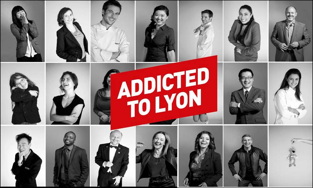
Months ago, Genoa´s successful seeking for a new visual identity reached its peak with a campaign targeting citizens and local stakeholders. However, such momentum was envisaged by the City Council not only for getting acceptance and appropriation around the new logo, but overall to raise awareness on the need of more strategic communication for the city. That seminal campaign, focused to an internal audience, was smartly used by the city promotion team as “big bang” to set the basis of integrated city branding. They conceded something tangible at the very beginning, i.e. new visual identity, for then igniting city´s collective ambitions and creating favorable conditions (including political backing) to address truly relevant issues such as a unifying narrative for Genoa, collaborative model involving selected stakeholders and more ambitious action planning promoting the city at both national and international levels.
In any case, advertising, its creative side at least, can be seen as a fascinating synthesizing effort for producing and combining city´s core messages and powerful images. That is, the ultimate test tube where the unifying city proposition is distilled, successfully or unsuccessfully. A challenging and risky issue anyway.
Ambassador networks is another classical formula in the mix of channels delivering brand´s messages and values. It has great potential to socialize and create commitment around the city brand. Nevertheless, such potential is not always fully exploited beyond putting faces and testimonials to PR campaigns. A common reason for that is lack of concrete work plans for all the people, local innovators and firms appointed. Fortunately, new ambassador strategies are emerging in different contexts round Europe, but now more oriented to concrete action planning. In 2013, OnlyLyon launched the 1 Ambassador = 1 Action concept; the Youth Goodwill Ambassador Corps of Denmar, is a fantastic experience addressing students from higher education as force for messaging cities and country´s narrative; Connect Ireland, is a groundbreaking approach by the Irish Government, with more than 23,000 "connectors" introducing over one thousand companies with a real willingness to invest in the Country.
And of course big events, as they host great potential to be capitalized in terms of communication. Perhaps, it would be better talking about unique (big) events, since many small and medium-sized cities have leapfrogged through their international visibility thanks to high-quality singular cultural events, e.g. Montreaux-popular music, Basel-contemporary art, Avignon-theatre, Glastonbury-rock music, etc. At this point, the idea is to consciously address the event for keeping fresh and alive existing city values, as for instance Liverpool is doing with music and music festivals; or expanding the big event´s scope for new value creation to the city, like Barcelona has masterfully done hosting the World Mobile Congress.
After winning in 2011 the yearly organization of the most relevant world business fair in the mobile phone industry, the city of Barcelona has been intensively working promoting an ecology of different initiatives around the mobility concept related to research, living lab, entrepreneurship, cluster development, visitor centre (mobile world center, a showroom in partnership with Telefonica), contamination of other existing events in the city with the “virus” of mobility, citizenship (Mobile Ready initiative, a catalogue of cutting-edge mobile experiences in the city open to locals and visitors), etc. This evolution in a short period of time, from a unique big event to a cross-cutting theme expanded through a variety of activities in the city has finally resulted in a new attribute or value for the brand Barcelona, “Barcelona as mobile world capital”.
… and expanding the concept of communication action
Other minor, and not so minor, but effective actions should be also understood as conscious communication tools. A kind of soft actions aimed at promoting without “selling the city”, which can make a difference whether they are suitably articulated to more obvious initiatives, within an integrated communication strategy for the city. A number of them could be now mentioned:
• A new kind of visitor center is emerging, different to the ones on “what to see-where to sleep”. This time with a focus on showcasing the contemporary city, including flagship urban projects, information on relevant business clusters, etc. The Italian model of “urban centres”, like in Turin or Bologna, can show a path in this sense.
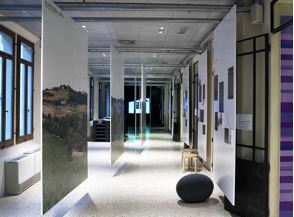
Urban Center Bologna. From Tuesday to Friday from 10.00 a.m. to 8.00 p.m. Saturdays from 10.00 a.m. to 7.00 p.m. Free admission.
• Re-freshing visitor info and city merchandising. For instance, city authorities in Vienna organized an international design contest on the 21st Century souvenir called “European Home Run”. Selected projects, chosen by a jury of international experts in design and tourism, were presented during the 2012 Vienna Design Week. Awarded items were produced to be sold by the city’s tourist information centres.
• Urban signage as setting for city´s core messages. City´s new visual identities might be used to also upgrade signage´s visual quality, if needed, and in some contexts inducting brand appropriation and rising sense of place.

Dundee: urban signage as setting for city´s core messages
• Commissioned reports. City Council, dedicated agencies, brand platforms… can tell their own city´s story by means of booklets, reports, web contents, etc. But, what if others tell it too? Would not it increase credibility? Thus, reputable organizations, experts or scholars can also report a successful urban transformation process, for instance. In a way, that is the case of the OECD´s “Urban Renaissance” series, by which the international entity organized large-scale reviews upon request of interested cities.
• Symbolic actions. We mean initiatives not necessarily designed for promotional purposes, but can have great impact on the city’s visibility and reputation. They can be singular events, major urban projects or even political decisions, e.g. the decision of the conservative nationalist party, now governing Catalonia, to surprisingly raise the question of the national sovereignty just when the economic crisis was heavily hitting Spain some years ago, can be seen as symbolic action from a placebranding perspective.
The new frontier: crowding together the city´s story
Let´s come back to the digital shift. Its profound impact over destination marketing is well known and still expanding very rapidly. In this context, social media is called to play a growing role in place branding for the simple reason it´s a rapid channel to increase engagement, interaction and co-creation with the city´s diverse target groups, notably its own residents. Thus, making the most of the crowd is definitively the new frontier in effective place branding, for two reasons:
• It increases ownership by the community, besides Local Authority and the core group of selected stakeholder, as in crowdsourcing there are no “experts”.
• It increases authenticity, since it´s more credible whether third parties also talk about the city than just “official storytelling” delivered by dedicated agencies and teams. We mean spontaneous talks, not just classical testimonials within official promotional materials. In the city of Nantes, bloggers are now at the heart of the tourism office’s digital strategy.
• It may help in keeping city narrative updated on a permanent basis. Actually, the rise of digital smart citizens and their ability to personalise and share city experiences is opening exciting opportunities in many aspects of urban development.
Mike Moffo, a marketing and digital PR consultant who attended the URBACT - CityLogo workshop on city branding that was held in Dundee, referred to this trend as simply “strategic social engagement”, and he gave two main recommendations when using social media as communication channel in city branding & marketing.
First, “don’t broadcast, tell stories”, “move beyond the press release”. When asking the crowd for contents you firstly have to provide contents as well. In other words, when making use of social media, the effort in building up a powerful narrative for the city is even bigger. Let´s say a seminal narrative to be then shared, enriched, contested… Second insight is “respect the platform”. That is, each social media platform (Instagram, Facebook, Twitter, Pinterest…) has its own “grammar” that should be respected when using it to deliver our messages and interact with our community of targets. That is why we claimed, at the beginning of this article, that such new ecology of tools in city branding requires skills to tell the city´s story in a variety of environments and platforms.
Concluding remarks
Just three basic ideas on the question of communication actions in today´s city branding & marketing:
• High awareness on the impact of the digital shift in the way cities promote themselves, although conventional tools, duly rethought, still host great effectiveness potential.
• Priority to social media and crowdsourced methods to increase authenticity, engagement with the place-brand and even rising sense of place.
As marketing is interaction, do not just touch your audience (city´s main target groups) but open a “dialogue” with them, promoting two-way communication. As The Huffington Post columnist Simon Tam said “treat social media more like a telephone and less like a megaphone”. Remind that “markets are conversations”, this the first statement of the visionary “Cluetrain Manifesto".
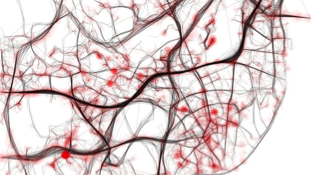
Lisbon’s blood vessels. The traffic of Lisbon is portrayed exploring metaphors of living organisms. Produced by the Computational Design and Visualization Lab, University of Coimbra.
And a last call to experiment on new ways of representing the place and interacting with target groups, which can make a difference. If branding and marketing is about differentiation, more stunning ways and styles to represent our cities and places might be explored, further to classical pictures, maps and tables of figures: architectural info-graphics, computer simulations applied to urban planning, data visualization, serious gaming… and other hybrid ways bringing together geographers, urbanists, computational design, GIS people, visual artists, etc.
by URBACT expert, Miguel Rivas
Read more:
City Logo network - URBACT website
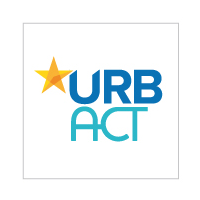 Submitted by URBACT on
Submitted by URBACT on




